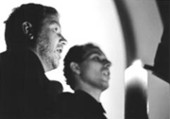Performance of The Birth of Apollo
 Staging the Homeric hymn (8th century BC) to Apollo of Delos.
Staging the Homeric hymn (8th century BC) to Apollo of Delos. Translated from Ancient Greek and directed by Mari Murdvee.
Costume design: Eve Valper
Music arrangements: Toivo SÔmer
Choreography: KĂŒlli Kressa
The cast:
Apollo - Andreas Kalkun
Goddess Leto - Maare-Marika Heinsoo
Storyteller - Andrus RootsmÀe
Singer, Isle of Delos - Mari Murdvee
Chorus - Ulvi Karu, KĂŒlli Kressa, Pille Niin, Hedvig PriimĂ€gi, Anu PĂ”ldsam
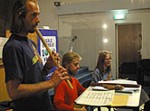 The musicians:
The musicians:
Toivo SÔmer - lute, lyre, tambourine
Heikki-Rein Veromann - flutes
Prologue and Epilogue:
Score for the initial verses of the hymn (1-9) by Mari Murdvee
The songs (in the order of musical fragments performed): Mesomedes. Ode to the Sun
Euripides. Orestes, fr. 3
Mesomedes. Ode to Nemesis
Seikilos' Epitaph (flute)
Athenaios. Delphic paean
Address to the Muse
Address to Calliope and Apollo
Athenian Stranger: I am glad to hear that you agree with me; for, indeed, the discipline of pleasure and pain which, when rightly ordered, is a principle of education, has been often relaxed and corrupted in human life. And the Gods, pitying the toils which our race is born to undergo, have appointed holy festivals, wherein men alternate rest with labour; and have given them the Muses and Apollo, the leader of the Muses, and Dionysus, to be companions in their revels, that they may improve their education by taking part in the festivals of the Gods, and with their help.
(from Plato's Laws, transl. Benjamin Jowett, http://eserver.org/philosophy/plato/laws.txt)
The play "The Birth of Apollo" is based on one of the oldest existing Homeric hymns (appr. VIII century B.C.), describing the story of the birth of Apollo, the God of fine arts, in the isle of Delos. The translation, prepared for this particular production, has retained the original hexametric form of the text. The musical score is built around the few extant fragments of Ancient Greek music, linking these through solo parts and instrumental pieces to the plot. The text and the music of the play are brought together by choreography. The dancing in the play seeks to express the verse's intrinsic rhythms and their connection to music, as it was characteristic of the early Greek tradition. KĂŒlli Kressa's choreography, which may be referred to as "quantitative dance" is an experiment in itself.
Mari Murdvee
 Mari Murdvee (born 1959) studied the classical languages and literature. She now works at the Department of Manuscripts and Rare Books at the Library of the University of Tartu. She also teaches Latin at the Faculty of Theology of the University of Tartu and Ancient Greek at the Tartu Theological Academy. Mari Murdvee is also a graduate of the Drama Studio, run by Jaan Tooming and Ălo Vilimaa at the Theatre Vanemuine. With the students of the Department of Classical Philology of the University of Tartu she has staged the 7th Song of Homer's
Mari Murdvee (born 1959) studied the classical languages and literature. She now works at the Department of Manuscripts and Rare Books at the Library of the University of Tartu. She also teaches Latin at the Faculty of Theology of the University of Tartu and Ancient Greek at the Tartu Theological Academy. Mari Murdvee is also a graduate of the Drama Studio, run by Jaan Tooming and Ălo Vilimaa at the Theatre Vanemuine. With the students of the Department of Classical Philology of the University of Tartu she has staged the 7th Song of Homer's 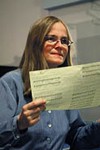 Odyssey (1992), Theocritus' Soothsayer (1994) and a recital of Sappho's poetry (1994). In 1997 and 1998, in collaboration with Heli Kohv, she organised summer seminars (called Symposia) on ancient Greek culture. At the Early Music Festival (2000) she directed the opening performance of Aristophanes' play "Birds". She has translated Menandros and Aristophanes from Greek and Petrach, Horace, Hrotsvit and others from Latin. Her translations have been published by the literary journals Akadeemia and Vikerkaar.
Odyssey (1992), Theocritus' Soothsayer (1994) and a recital of Sappho's poetry (1994). In 1997 and 1998, in collaboration with Heli Kohv, she organised summer seminars (called Symposia) on ancient Greek culture. At the Early Music Festival (2000) she directed the opening performance of Aristophanes' play "Birds". She has translated Menandros and Aristophanes from Greek and Petrach, Horace, Hrotsvit and others from Latin. Her translations have been published by the literary journals Akadeemia and Vikerkaar.
The University of Tartu Library Recorded Sound Department
 The University of Tartu Library Recorded Sound Department.
The University of Tartu Library Recorded Sound Department. Music - whether in manuscripts or printed form - has always been present in the libraries. Records, invented some hundred years ago, however, have met with significant resistance on their way to library shelves.
Thus it is a real pleasure for us recall that the University of Tartu Library started its collection of records already at its previous location on the Toome Hill, in what is now the Museum of University History. The first record of the collection was acquired in 1976, the centenniary of the invention of the phonograph. In order to systematise and catalogue the growing collection, in May 1983 the Library set up a separate Department - the Department of Recorded Sound.
 It is only natural that a collection, as it grows, develops its own preferences. The Department of Recorded Sound has since its foundation consciously given preference to traditional, classical, Oriental and early music. Unfortunately these fields were regarded as at best marginal by the setters of Soviet cultural policy. The last ten years, however, have enabled us to cover a lot of the material missed during the Soviet era.
It is only natural that a collection, as it grows, develops its own preferences. The Department of Recorded Sound has since its foundation consciously given preference to traditional, classical, Oriental and early music. Unfortunately these fields were regarded as at best marginal by the setters of Soviet cultural policy. The last ten years, however, have enabled us to cover a lot of the material missed during the Soviet era.
The considerably enlivened early music activity of the 1990s and especially the tradition of Tartu Early Music Festivals has provided the Department of Recorded Sound and its collection policy with remarkable support. The music lovers entertained, educated and guided in the world of early music by the Festival have become frequent patrons of our collection. This has strengthened our resolve and shown us that the choices we have made resonate with our patrons' interests. We see ourselves as partners with the Festival, working towards the same goals.
 Hence it is no coincidence that the present Festival has expanded into the Library. However, it must be recognised as fortuitous that the 23rd of August 1982 was the day that saw the entry of the first long-playing early music record ("Early Italian Renaissance Music" by Hortus Musicus) into the inventory lists of the Department. Yet, in addition to being fortuitous this must also be recognised as fortunate, since it made it very easy for us to agree on the title of the Department's contribution to the festival. We are happy to offer the festival guests a sample cross-section of the Department's collection, representing our preferred examples of Oriental and Early Music. We hope our cooperation with the Tartu Early Music Festival will continue in the coming years.
Hence it is no coincidence that the present Festival has expanded into the Library. However, it must be recognised as fortuitous that the 23rd of August 1982 was the day that saw the entry of the first long-playing early music record ("Early Italian Renaissance Music" by Hortus Musicus) into the inventory lists of the Department. Yet, in addition to being fortuitous this must also be recognised as fortunate, since it made it very easy for us to agree on the title of the Department's contribution to the festival. We are happy to offer the festival guests a sample cross-section of the Department's collection, representing our preferred examples of Oriental and Early Music. We hope our cooperation with the Tartu Early Music Festival will continue in the coming years.
Avo Kartul
Head of the University of Tartu Library Recorded Sound Department
V. Hemapala Perera
 Born in 1942 in Badulla, a town located on the Eastern rim of the mountain country where the high mountains meet the plains. He lost his eyesight completely when he was five. As an 11-year-old boy, he started learning the flute and the tabla under Guru J. M. Amaranath, one of the most famous musicians of his time. For the next 14 years, in the mandapa of Guru Amaranath, Hemapala Perera gradually mastered five musical instruments: the flute, the tabla, the violin, the mandolin, and the guitar. At the age of 27, Hemapala Perera became known to the music world when he gave his spectacular performance before the music gurus from North India, earning much admiration and a "superior-grade artist" title to accompany him. His music, as the expression goes, became "the sweetest honey poured in to Sinhalese ears". Hemapala Perera's extraordinary music talents together with the subtle knowledge his masters have passed on to him, have enabled him to tame the Western musical instruments such as the guitar and the mandolin, accommodating them to play North Indian classical music; from these, he developed a special love for the flute. Hemapala Perera has visited many foreign nations in carrying out his mission of entertaining and inspiring the world with Hindustani classical music. At present, he is engaged as a musician at the Sri Lankan National Radio and also serves as Visiting Counselor in the Institute of Aesthetic Studies of the University of Kelaniya, Sri Lanka.
Born in 1942 in Badulla, a town located on the Eastern rim of the mountain country where the high mountains meet the plains. He lost his eyesight completely when he was five. As an 11-year-old boy, he started learning the flute and the tabla under Guru J. M. Amaranath, one of the most famous musicians of his time. For the next 14 years, in the mandapa of Guru Amaranath, Hemapala Perera gradually mastered five musical instruments: the flute, the tabla, the violin, the mandolin, and the guitar. At the age of 27, Hemapala Perera became known to the music world when he gave his spectacular performance before the music gurus from North India, earning much admiration and a "superior-grade artist" title to accompany him. His music, as the expression goes, became "the sweetest honey poured in to Sinhalese ears". Hemapala Perera's extraordinary music talents together with the subtle knowledge his masters have passed on to him, have enabled him to tame the Western musical instruments such as the guitar and the mandolin, accommodating them to play North Indian classical music; from these, he developed a special love for the flute. Hemapala Perera has visited many foreign nations in carrying out his mission of entertaining and inspiring the world with Hindustani classical music. At present, he is engaged as a musician at the Sri Lankan National Radio and also serves as Visiting Counselor in the Institute of Aesthetic Studies of the University of Kelaniya, Sri Lanka.  What is music from my personal point of view?
What is music from my personal point of view?
The general view today is that music is substantially for entertainment - I have to disagree with this idea. To me, music is something going far beyond that conception-it is truly expansive and transcendental. While discussing these things, we must concentrate on the classical aspect of music, whether it be Occidental or Oriental-otherwise we'll find ourselves in an emptiness.
Every human is inclined to one or another religious/philosophical observance, of which, whatsoever the brand name with which it is labelled, the ultimate goal is the same: spiritual attainment. Thus music is one such course that leads man to this particular goal-a way to heaven. Beyond the climax of classical music, it is nothing but redemption from the secular world. How do I differentiate Eastern from Western classical music? It is an unequivocal fact that man has a brain as well as a heart. In accordance with the Eastern view, held in Hindustani classical music, priority is given to mind (heart) from which music then spreads to the brain, while according to the Western point of view classical music spreads vice versa. However, irrespective of the order in which it happens, music does connect these polarities.
I should also like to mention the fact that my main instrument is the bamboo flute. Unlike any other instrument which is a union of multiple craftsmanships, the distinctive feature of this flute is that it is the exact opposite of that. It is not an addition of parts together but a reduction of parts away from the natural piece of bamboo: it is something almost empty. But the superb characteristic of it is that it has the capacity to go hand in hand with any other developed modern instrument. Though very simple in its make, it includes all the techniques that any other instrument has, though it still has maintained its original state. It has the ability to stand climatic changes; it is easy to handle as well as transport and quite inexpensive in comparison with other instruments.
How did music affect me personally?
Well, let me give a brief comment: Music is my second eyesight!
V. Hemapala Perera
Pt. Anindo Chatterjee
 Pundit Anindo Chatterjee (born 1953 in Calcutta) is considered one of the top tabla masters of our time. His musical education started at the age of five under the great music teacher Pt Gyan Prakash Ghoshi. When he was seventeen, Anindo Chatterjee won the title of the best young tabla player of India. With Pt Nikhil Bannerjee (sitar), who has remained a source of inspiration for him ever since, he went on his first tour of Europe in 1975. Today, Pt Anindo Chatterjee often tours the world both as a solo performer and accompanying musician to the best Indian masters.
Pundit Anindo Chatterjee (born 1953 in Calcutta) is considered one of the top tabla masters of our time. His musical education started at the age of five under the great music teacher Pt Gyan Prakash Ghoshi. When he was seventeen, Anindo Chatterjee won the title of the best young tabla player of India. With Pt Nikhil Bannerjee (sitar), who has remained a source of inspiration for him ever since, he went on his first tour of Europe in 1975. Today, Pt Anindo Chatterjee often tours the world both as a solo performer and accompanying musician to the best Indian masters. 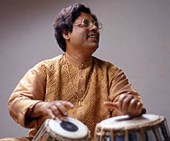 Participating in the recording of countless albums and CDs, during his years of practice Pt Chatterjee has developed a distinctly individual style. Owing to his performer's talent, the smooth texture of his sound and considerable experience, every concert Pt Chatterjee gives leaves a profound impression of wholeness on the audience.
Participating in the recording of countless albums and CDs, during his years of practice Pt Chatterjee has developed a distinctly individual style. Owing to his performer's talent, the smooth texture of his sound and considerable experience, every concert Pt Chatterjee gives leaves a profound impression of wholeness on the audience.
Russki Lad
 The early music ensemble Russkiy Lad was organized in St Petersburg in 1999. The group consists of 9 members, all of who have secondary or higher education in music. All our members are singers of various Orthodox churches of St Petersburg. The aim of the group is to familiarise the general public with the history and treasures of Russian Spiritual music and liturgic chant. Our repertory includes Orthodox liturgic chants from the earliest period (XII century) to contemporaneity (modern spiritual compositions and harmonisations).
The early music ensemble Russkiy Lad was organized in St Petersburg in 1999. The group consists of 9 members, all of who have secondary or higher education in music. All our members are singers of various Orthodox churches of St Petersburg. The aim of the group is to familiarise the general public with the history and treasures of Russian Spiritual music and liturgic chant. Our repertory includes Orthodox liturgic chants from the earliest period (XII century) to contemporaneity (modern spiritual compositions and harmonisations). 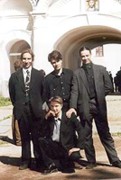 Compared to European countries, Russia converted to Christianity relatively late: the citizens of Kiev were baptised in 988 (although according to the annals, a Christian congregation was known to exist in Kiev already in the IX century). Together with the new faith, Russia also adopted its already complex system of religious service, borrowed from the Byzantine tradition. This included liturgic chant. It took several hundred years (approximately until the XIV century) for Christianity to take root and for liturgic chant to be adapted to Russian settings. In the course of this, the chant became known in Russian as znamenniy. It was this type of monodic chant that remained predominant in the Russian church until the XVI century. Due to its domination during at least four centuries, the znamenniy chant came to embody the entire variety of Russian liturgy, being adapted to express the full yearly cycle of religious service: for instance, the All-Night Vigil alone can include up to 54 different compositions.
Compared to European countries, Russia converted to Christianity relatively late: the citizens of Kiev were baptised in 988 (although according to the annals, a Christian congregation was known to exist in Kiev already in the IX century). Together with the new faith, Russia also adopted its already complex system of religious service, borrowed from the Byzantine tradition. This included liturgic chant. It took several hundred years (approximately until the XIV century) for Christianity to take root and for liturgic chant to be adapted to Russian settings. In the course of this, the chant became known in Russian as znamenniy. It was this type of monodic chant that remained predominant in the Russian church until the XVI century. Due to its domination during at least four centuries, the znamenniy chant came to embody the entire variety of Russian liturgy, being adapted to express the full yearly cycle of religious service: for instance, the All-Night Vigil alone can include up to 54 different compositions. Starting from the XIV century, references to other, different modes of chant (yet still monodic) start appearing in the annals (demestvenniy, putyevoi). By XVIII century we find a multitude of both monodic (the above plus Greek and Bulgarian chants, as well as the compositions of individual authors) and polyphonic chant (three-part putyevoi chant, two- and three-part znamenniy chant). Subsequently Russia also receives influences from the Polish partes tradition and the Little-Russian samolovka harmonization of ancient chants, with a third added to the main melody and a lower voice supporting the main melodys as a changing bourdon.
In modern times, the last century of study devoted to early liturgic chant has resulted in a renewal of the use of early chant. The members of the group Russkiy Lad sing regularly in the Monastery of Valaam (Boris Sorokin - 2nd chorusmaster), Optinaya Pustynya (Alexandr Bordak - singer), and Konyev (Dmitri Fountussov - chorusmaster) - places where all types and modes of early chant have traditionally been used in liturgical service. We will perform compositions from these early chants in our concert.
Dmitri Fountussov
 Dmitri Vladimirovitch Fountussov (born 1973) graduated from the violin class of Youth Music School in 1987. Having started singing in church in 1991, he became chorusmaster in 1992. His interest for early liturgic chant goes back to 1993. From 1996, Dmitri Fountussov has continued his studies of early Russian singing at the St Petersburg Conservatory. He has worked with the manuscipts in the National Public Library of Russia and hosted a radio programme in the "Radio Mary" on the history of Russian spiritual music and liturgic chant.
Dmitri Vladimirovitch Fountussov (born 1973) graduated from the violin class of Youth Music School in 1987. Having started singing in church in 1991, he became chorusmaster in 1992. His interest for early liturgic chant goes back to 1993. From 1996, Dmitri Fountussov has continued his studies of early Russian singing at the St Petersburg Conservatory. He has worked with the manuscipts in the National Public Library of Russia and hosted a radio programme in the "Radio Mary" on the history of Russian spiritual music and liturgic chant. According to Fountussov himself, what draws him to work with the early chant is above all  the practical benefit he immediately takes from it for performing liturgic service. In 1999, he and his friends started the ensemble Russki Lad, the repertory of which revolves around early chant. Apart from him, another three members of the group are involved in deciphering old manuscripts. For the last six months, Dmitri Fountussov has held the post of Chorusmaster of the Konyev Monastery, famous for its use of early chant in its liturgical service.
the practical benefit he immediately takes from it for performing liturgic service. In 1999, he and his friends started the ensemble Russki Lad, the repertory of which revolves around early chant. Apart from him, another three members of the group are involved in deciphering old manuscripts. For the last six months, Dmitri Fountussov has held the post of Chorusmaster of the Konyev Monastery, famous for its use of early chant in its liturgical service.
Miriam Andersén
 Miriam Andersén discovered medieval music when she was singing in the choral ensemble Schola Gregoriana Holmiae. This brought her to study at the Schola Cantorum Basiliensis, where she took classes in medieval singing with Dominique Vellard, in medieval harp with Hedrun Rosenzweig and in medieval musical notation with Karin Smith-Paulsmeier. Before entering the Schola, she studied calligraphy and book-binding in London.
Miriam Andersén discovered medieval music when she was singing in the choral ensemble Schola Gregoriana Holmiae. This brought her to study at the Schola Cantorum Basiliensis, where she took classes in medieval singing with Dominique Vellard, in medieval harp with Hedrun Rosenzweig and in medieval musical notation with Karin Smith-Paulsmeier. Before entering the Schola, she studied calligraphy and book-binding in London.  Miriam Andersen has worked as a calligrapher, held jobs at theatres and circuses and played rock music. Currently, she works as a freelance musician, collaborating with several medieval music groups such as Alba, Real, Sarband, Ferrara Ensemble and Discantus. She has given concerts and recorded numerous CDs in several European countries as well as the United States, Mexico, and Australia. Her interests include theatre projects and experimental music. Her special focus has been on playing traditional Swedish music according to the medieval rules of musical performance.
Miriam Andersen has worked as a calligrapher, held jobs at theatres and circuses and played rock music. Currently, she works as a freelance musician, collaborating with several medieval music groups such as Alba, Real, Sarband, Ferrara Ensemble and Discantus. She has given concerts and recorded numerous CDs in several European countries as well as the United States, Mexico, and Australia. Her interests include theatre projects and experimental music. Her special focus has been on playing traditional Swedish music according to the medieval rules of musical performance.
Tarmo Tabas
 Tarmo Tabas studied singing at Tartu College of Music, and has sung in the early music ensemble Via Sonora. At the same time he was for many years a member of the Viljandi Town Waits, with whom he has travelled extensively and participated in
Tarmo Tabas studied singing at Tartu College of Music, and has sung in the early music ensemble Via Sonora. At the same time he was for many years a member of the Viljandi Town Waits, with whom he has travelled extensively and participated in  numerous courses. He has also taken part in the work of the early music group Linnamuusikud and Estonian spiritual folkmusic groups Heinavanker, Scandikus, and Triskele. Tarmo Tabas has been cantor of the Catholic Church in Tartu for a number of years. He is currantly working as a presenter for Estonian Radio, creating programmes, selecting and presenting music and conducting interviews.
numerous courses. He has also taken part in the work of the early music group Linnamuusikud and Estonian spiritual folkmusic groups Heinavanker, Scandikus, and Triskele. Tarmo Tabas has been cantor of the Catholic Church in Tartu for a number of years. He is currantly working as a presenter for Estonian Radio, creating programmes, selecting and presenting music and conducting interviews.
Ballads from the Realm Beyond
 In this solo concert Miriam Andersén invites the audience into the strange world of Swedish folklore. The form of storytelling which the Scandinavian medieval ballads represent connects on to the great epic tradition of the Viking Age and the era of the Great Migration. During the high Middle Ages stories about legendary or more recent heroes, the old ¯sir gods, fatal love between noblemen and noblewomen, encounters with supernatural beings and witchcraft and also religious legends were composed or recast in ballad form. This genre became very popular, generating new compositions and themes over a period of several hundred years. On the Faroe Islands it is still sung as dance accompaniment, whereas the most recent recordings of oral traditions in Sweden date from the twentieth century. A ballad like The Two Sisters is found all over Scandinavia, in England and in Estonia. The Dream Song is solely found in the south of Norway.
In this solo concert Miriam Andersén invites the audience into the strange world of Swedish folklore. The form of storytelling which the Scandinavian medieval ballads represent connects on to the great epic tradition of the Viking Age and the era of the Great Migration. During the high Middle Ages stories about legendary or more recent heroes, the old ¯sir gods, fatal love between noblemen and noblewomen, encounters with supernatural beings and witchcraft and also religious legends were composed or recast in ballad form. This genre became very popular, generating new compositions and themes over a period of several hundred years. On the Faroe Islands it is still sung as dance accompaniment, whereas the most recent recordings of oral traditions in Sweden date from the twentieth century. A ballad like The Two Sisters is found all over Scandinavia, in England and in Estonia. The Dream Song is solely found in the south of Norway.
Sorgens makt (The Power of Grief) is a direct parallel to a passage in the epic Edda, where Helge Hundingsbane sets out from Valhalla to visit his wife, the valkyrie Sigrun, who is grieving over him so bitterly that her tears have covered him in blood. They spend the night in his grave-mound and when he leaves at dawn she dies of grief. The Norwegian Draumkvede (Dream Song), on the other hand, describes a mystical journey to the realm of death at Christmas - the "Midwinter nights" around the time of the winter solstice were traditionally regarded as dangerous and full of magic. During the Christmas night all sorts of ghosts were believed to be out and about, even old Woden with his followers - as is reflected in Olav à stesonŽs tale. In TvÄ systrar (Two Sisters), Vaxebarnet (Wax Doll) and Den förtrollade riddaren (The Enchanted Knight) magic is at play: the dead body of a girl is made into a harp, with power to avenge her death; a young woman suffers an unnaturally extended pregnancy, brought about by the voodoo-like witchcraft of her mother-in-law; a boy must taste the blood of his unborn brother in order to undo the spell that turned him into a werewolf. In Stepmother a dead mother obtains permission from God to visit her children.
Jaan-Eik Tulve
 Jaan-Eik Tulve is a native of Tallinn. In 1991, he graduated as choirmaster from the Tallinn Conservatory and went on to continue his studies in the speciality of directing Gregorian choirs at the Paris National Conservatory for Music and Dance (Conservatoire national supérieur de musique et de danse de Paris). After graduating, he stayed at the Conservatory as assistant to Professor Louis-Marie Vigne, helping him with the new Gregorian choirmasters class. He has also taught at a number of Gregorian courses all over Europe (France, Belgium, Italy, Norway, the Faroe Islands, Lithuania, Finland and Estonia). Starting 1996, he holds a Professorship of Gregorian chant at the Estonian Academy of Music. In 1999, he participated in project Gregoriana Fennica (commissioned by the Sibelius Academy) as an expert investigator of early Finnish manuscripts. He has also often been invited to work with the choirs of various monasteries, to share his knowledge with the everyday practitioners of Gregorian chant. A considerable influence on the development of Jaan-Eik Tulve as musician and Gregorianist has been exerted by the still ongoing collaboration with Dom Daniel Saulnier of the Solesmes Benedictine Monastery in France.
Jaan-Eik Tulve is a native of Tallinn. In 1991, he graduated as choirmaster from the Tallinn Conservatory and went on to continue his studies in the speciality of directing Gregorian choirs at the Paris National Conservatory for Music and Dance (Conservatoire national supérieur de musique et de danse de Paris). After graduating, he stayed at the Conservatory as assistant to Professor Louis-Marie Vigne, helping him with the new Gregorian choirmasters class. He has also taught at a number of Gregorian courses all over Europe (France, Belgium, Italy, Norway, the Faroe Islands, Lithuania, Finland and Estonia). Starting 1996, he holds a Professorship of Gregorian chant at the Estonian Academy of Music. In 1999, he participated in project Gregoriana Fennica (commissioned by the Sibelius Academy) as an expert investigator of early Finnish manuscripts. He has also often been invited to work with the choirs of various monasteries, to share his knowledge with the everyday practitioners of Gregorian chant. A considerable influence on the development of Jaan-Eik Tulve as musician and Gregorianist has been exerted by the still ongoing collaboration with Dom Daniel Saulnier of the Solesmes Benedictine Monastery in France. 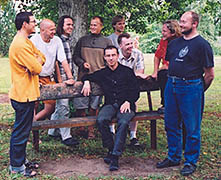 Since 1992, Jaan-Eik Tulve has worked as the Director of the Paris Gregorian Choir (Choeur Grégorien de Paris), together with which he has given concerts across Europe as well as in Lebanon and Morocco. His recordings with the Choir have been recognised by a number of awards. In addition to the above, he has directed the Estonian National Men's Choir. Jaan-Eik Tulve has founded the group Lac et Mel (Paris 1993), focussing in addition to the Gregorian chant also on early polyphony. He also created the Women's Section of the Paris Gregorian Choir (1994) and the ensemble Vox Clamantis (Tallinn 1996).
Since 1992, Jaan-Eik Tulve has worked as the Director of the Paris Gregorian Choir (Choeur Grégorien de Paris), together with which he has given concerts across Europe as well as in Lebanon and Morocco. His recordings with the Choir have been recognised by a number of awards. In addition to the above, he has directed the Estonian National Men's Choir. Jaan-Eik Tulve has founded the group Lac et Mel (Paris 1993), focussing in addition to the Gregorian chant also on early polyphony. He also created the Women's Section of the Paris Gregorian Choir (1994) and the ensemble Vox Clamantis (Tallinn 1996).
Vox Clamantis
 The early music ensemble Vox Clamantis was created in 1996 and unites musicians and singers active in a variety of musical spheres - singers, composers, instrumentalists and conductors - all of who share a keen interest in Gregorian chant. This chant - the musical tradition thought to constitute the foundations of European professional music - they often perform in its most natural environment of liturgic service. Still, the group has also given numerous concerts both in Estonia and abroad (Finland, Norway, France, Belgium, Lebanon and Portugal). Vox Clamantis deserves special mention for their collaboration with the Choeur Grégorien de Paris, which has borne the fruit of joint concerts in Europe as well as Morocco. The group has also performed with a number of world-renowned organists such as Jean Boyer, Werner Jacob, Jon Laukvik, Peter van Dijk, Gabriel Marghieri and others. Vox Clamantis has given concerts with the Hortus Musicus ensemble (Director Andres Mustonen), the Estonian Philharmonic Chamber Choir and the Tallinn Chamber Music Orchestra (Director TÔnu Kaljuste). The ensemble have recorded several CDs.
The early music ensemble Vox Clamantis was created in 1996 and unites musicians and singers active in a variety of musical spheres - singers, composers, instrumentalists and conductors - all of who share a keen interest in Gregorian chant. This chant - the musical tradition thought to constitute the foundations of European professional music - they often perform in its most natural environment of liturgic service. Still, the group has also given numerous concerts both in Estonia and abroad (Finland, Norway, France, Belgium, Lebanon and Portugal). Vox Clamantis deserves special mention for their collaboration with the Choeur Grégorien de Paris, which has borne the fruit of joint concerts in Europe as well as Morocco. The group has also performed with a number of world-renowned organists such as Jean Boyer, Werner Jacob, Jon Laukvik, Peter van Dijk, Gabriel Marghieri and others. Vox Clamantis has given concerts with the Hortus Musicus ensemble (Director Andres Mustonen), the Estonian Philharmonic Chamber Choir and the Tallinn Chamber Music Orchestra (Director TÔnu Kaljuste). The ensemble have recorded several CDs. 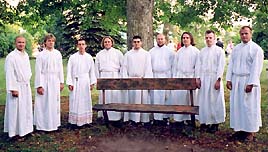
Vox Clamantis featuring:
Risto Joost, Riivo Kallasmaa, TĂ”nis Kaumann, Taniel Kirikal, Jaan Johannes Leppik, Raul Mikson, Erik SalumĂ€e, Siim Valdmets ja Mikk Ăleoja
Artistic and Musical Director:
Jaan-Eik Tulve
Gregorian Chant and Early Polyphonic Music
 Hymn GFestiva vosg
Hymn GFestiva vosgAntiphon GStetit Angelusg and Psalm 109 (110)
Antiphon GDum praeliareturg and Psalm 110 (111)
Antiphon GAngeli Dominig and Psalm 111 (112)
Duplum GBenedicamus Dominog (the school of Notre Dame)
Introit GBenediciteg (Guillaume Dufay)
Kyrie trope GCunctipotensg
Gradual GBenediciteg
Reading
Alleluia GVeni Sancte Spiritusg (Guillaume Dufay)
Sequence GVeni Sancte Spiritusg (Guillaume Dufay)
Offertoryum GStetit Angelusg
Prefatio (Eucharistic)
Sanctus
Communion GCantateg
Hymn GUrbs Jerusalemg (Guillaume Dufay)
Conrad Steinmann
 Conrad Steinmann was born in Rapperswil (Switzerland) in 1951 and studied recorder with Hans Martin Linde at the Schola Cantorum Basiliensis. In 1972, he won the first prize at the International Recorder Competition in Bruges in Belgium. From 1975 to 1982, he taught at the ZĂŒrich Music Academy. In 1982, he was appointed to the staff of the Schola Cantorum Basiliensis. As an aulos player, he reflects a unique interest and knowledge of ancient Greek music. In 1991 he was awarded the Arts Prize of the C. H. Ernst Stiftung in Winterthur. Conrad Steinmann is a member of the recorder ensemble
Conrad Steinmann was born in Rapperswil (Switzerland) in 1951 and studied recorder with Hans Martin Linde at the Schola Cantorum Basiliensis. In 1972, he won the first prize at the International Recorder Competition in Bruges in Belgium. From 1975 to 1982, he taught at the ZĂŒrich Music Academy. In 1982, he was appointed to the staff of the Schola Cantorum Basiliensis. As an aulos player, he reflects a unique interest and knowledge of ancient Greek music. In 1991 he was awarded the Arts Prize of the C. H. Ernst Stiftung in Winterthur. Conrad Steinmann is a member of the recorder ensemble 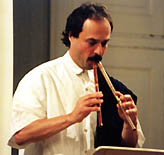 diferencias. He received particular impetus from his singing lessons with Kurt Widmer, as well as from his work with Nikolaus Harnoncourt, and from his work as performer and concert organizer for contemporary music. He has given the world premi?res of numerous works written for him, among others by M. KĂ€ser, R. Kelterborn, H. Marti, R. Moser, U. P. Schneider, P. Streiff, M. Wehrli, B. TrĂŒmpy, H. U. Lehmann and V. Ekimovsky. He has given concerts and master classes throughout Europe, in Australia, Japan, Israel, Moscow and North America. He can frequently be heard with Johann Sonnleitner, Ensemble 415, and London Baroque. His recordings have been published with Claves, Jecklin, Harmonia Mundi and Divox.
diferencias. He received particular impetus from his singing lessons with Kurt Widmer, as well as from his work with Nikolaus Harnoncourt, and from his work as performer and concert organizer for contemporary music. He has given the world premi?res of numerous works written for him, among others by M. KĂ€ser, R. Kelterborn, H. Marti, R. Moser, U. P. Schneider, P. Streiff, M. Wehrli, B. TrĂŒmpy, H. U. Lehmann and V. Ekimovsky. He has given concerts and master classes throughout Europe, in Australia, Japan, Israel, Moscow and North America. He can frequently be heard with Johann Sonnleitner, Ensemble 415, and London Baroque. His recordings have been published with Claves, Jecklin, Harmonia Mundi and Divox.
Mahmoud Turkmani
 Born in 1964 in Halba in Northern Lebanon, Mahmoud Turkmani worked in his home country as a guitar soloist and performe with various music groups (among them his own ensemble Rabija and the folk group Willada). As the civil war made it impossible for him to study music in Lebanon, he went to Moscow where he graduated from the State Academy of Arts in 1989. After that, he studied with Oscar Ghiglia (1989/90, Basle Conservatory), Juan Carmona (1991/92, flamenco course in Andalusia) and especially Professor Stephan Schmidt (1994-1997, Berne Conservatory) who encouraged Turkmani to develop his own musical language out of his multi-cultural background. While studying in Berne (Switzerland), Turkmani also performed in several Swiss cities and in 1993 formed the guitar quartet Ludus.
Born in 1964 in Halba in Northern Lebanon, Mahmoud Turkmani worked in his home country as a guitar soloist and performe with various music groups (among them his own ensemble Rabija and the folk group Willada). As the civil war made it impossible for him to study music in Lebanon, he went to Moscow where he graduated from the State Academy of Arts in 1989. After that, he studied with Oscar Ghiglia (1989/90, Basle Conservatory), Juan Carmona (1991/92, flamenco course in Andalusia) and especially Professor Stephan Schmidt (1994-1997, Berne Conservatory) who encouraged Turkmani to develop his own musical language out of his multi-cultural background. While studying in Berne (Switzerland), Turkmani also performed in several Swiss cities and in 1993 formed the guitar quartet Ludus. 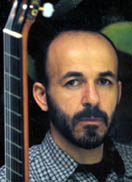 After the sudden death of his brother who was living in France, Turkmani came to discover his ability to express himself as a composer. He says: "I couldn't talk about my pain verbally. But after a year of sorrow, the music helped me and suddenly was bubbling out of me. I began to free myself by playing and writing which was some kind of self-therapy for me and not intended for the public. My friendship with Mansour Rahbany, one of Lebanon's great musicians and poets, inspired me to search for my Lebanese roots and transform them into a global language, thus making them accessible for a wider audience. Besides solo pieces, I wrote many quartets and also a concerto for guitar and thus developed this new language ever further."
After the sudden death of his brother who was living in France, Turkmani came to discover his ability to express himself as a composer. He says: "I couldn't talk about my pain verbally. But after a year of sorrow, the music helped me and suddenly was bubbling out of me. I began to free myself by playing and writing which was some kind of self-therapy for me and not intended for the public. My friendship with Mansour Rahbany, one of Lebanon's great musicians and poets, inspired me to search for my Lebanese roots and transform them into a global language, thus making them accessible for a wider audience. Besides solo pieces, I wrote many quartets and also a concerto for guitar and thus developed this new language ever further."
In the beginning, Turkmani used the guitar only (as a solo instrument and with his guitar quartet) but from 1998 onwards also pieces for oud, the Arabic lute, have found their way into his compositions. Oud, the "queen of the Arabic instruments", led Turkmani to basic questions of his own musical identity. He has grown up in two divergent musical systems, the Oriental and the Occidental. His profound knowledge of both systems made it possible for him to create connections between them without using superficial fusion techniques. How can the Maqamat world of sound with its richness of modi be combined with the Western tone system? How can complex Arab rhythms develop into a work of new music without getting stuck in shallow ?Arabisms'? So Turkmani daringly melts polyphonic styles and traces of Renaissance music with the melodic basis of Arab folk traditions. In the solo pieces, extraordinary neo-classical textures meet with Oriental expression and deeply moving moods.
Mahmoud Turkmani has collaborated, among others, with Kevyan Chemirani (the Persian percussionist) and Barry Guy (founder of the London Jazz Composers Orchestra), giving us a number of valuable recorded works.
Musica Silencii
 Studio Musica Silencii has been active at the Tallinn Old Town Educational College since 1992. Currently, the Class comprises some 25 young musicians, taught by TÔnu Sepp and Kai KÔivumÀgi. The idea of the Studio has been inspired by the best part of Christian art, which might exert at least a little bit of healing influence in today's world. What TÔnu Sepp attempts to pass down to the students is not so much education, culture or ethical principles but something even more important, as he himself likes to hint. Both visibly and audibly, the students have picked up on this.
Studio Musica Silencii has been active at the Tallinn Old Town Educational College since 1992. Currently, the Class comprises some 25 young musicians, taught by TÔnu Sepp and Kai KÔivumÀgi. The idea of the Studio has been inspired by the best part of Christian art, which might exert at least a little bit of healing influence in today's world. What TÔnu Sepp attempts to pass down to the students is not so much education, culture or ethical principles but something even more important, as he himself likes to hint. Both visibly and audibly, the students have picked up on this. 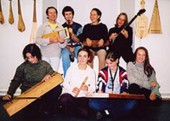 As to its form, the idea of the Studio is inspired by the medieval practice, according to which the master was essentially free to organise the training of students as he saw fit. So, too, has TÔnu Sepp been able to devote considerable time to the problems of the teaching method. This has led him to developing the ensemble method, integrating the elements of other subjects into it. It is very difficult to become a good soloist; yet it is basically within everyone's power to become a good ensemble player. The focus of the class is on liturgical music (mostly medieval and Renaissance pieces) and the general instrument of the class is the recorder. There are no marks. Students advance to higher grades when they are able to work their way through the previous textbooks. The only pass recognised is the faultless one.
As to its form, the idea of the Studio is inspired by the medieval practice, according to which the master was essentially free to organise the training of students as he saw fit. So, too, has TÔnu Sepp been able to devote considerable time to the problems of the teaching method. This has led him to developing the ensemble method, integrating the elements of other subjects into it. It is very difficult to become a good soloist; yet it is basically within everyone's power to become a good ensemble player. The focus of the class is on liturgical music (mostly medieval and Renaissance pieces) and the general instrument of the class is the recorder. There are no marks. Students advance to higher grades when they are able to work their way through the previous textbooks. The only pass recognised is the faultless one.
In addition to the recorder, the Studio also enables its students to study the zither, rebec, Latin guitar, dulcimer, harp, cornetto, spinet, drums, mandolin, violin and synthesizer.
Of Renaissance instruments, the Studio concentrates on various types of recorders, viola da gamba's, cornamuses and flutes. Some of the instruments have been built by TÔnu Sepp himself, others, however, are already the handiwork of the students themselves.
TÔnu Sepp
 TÔnu Sepp is a graduate of the Tallinn Children's Music School, Tallinn Music School and the Estonian National Conservatory (1979, speciality of flute). In early music, TÔnu Sepp is a self-taught master, having to date shared insights and practical experience with his students for more than 30 years. He has always devoted special attention to the education of children: in 1971, at the Viljandi Children's Music School, TÔnu Sepp was the first teacher in Estonia to begin instructing his pupils in early music. In the same year, he founded the early music ensemble Viljandi Town Cappella, the director of which he remained until 1989.
TÔnu Sepp is a graduate of the Tallinn Children's Music School, Tallinn Music School and the Estonian National Conservatory (1979, speciality of flute). In early music, TÔnu Sepp is a self-taught master, having to date shared insights and practical experience with his students for more than 30 years. He has always devoted special attention to the education of children: in 1971, at the Viljandi Children's Music School, TÔnu Sepp was the first teacher in Estonia to begin instructing his pupils in early music. In the same year, he founded the early music ensemble Viljandi Town Cappella, the director of which he remained until 1989.  In 1982, TÔnu Sepp started the Viljandi Early Music Festival (then Viljandi Early Music Days), the Artistic Director and organiser of which he was until 1989. Since 1992, TÔnu Sepp works at the Music School of Tallinn Old Town Educational College. Starting 1995, he directed a master class there; this has since then evolved into the Studio Musica Silentii. TÔnu Sepp is the author of the so far only Estonian-language recorder textbook. In addition to all this, he is also a craftsman - his artisan's hands have given shape to many early music instruments.
In 1982, TÔnu Sepp started the Viljandi Early Music Festival (then Viljandi Early Music Days), the Artistic Director and organiser of which he was until 1989. Since 1992, TÔnu Sepp works at the Music School of Tallinn Old Town Educational College. Starting 1995, he directed a master class there; this has since then evolved into the Studio Musica Silentii. TÔnu Sepp is the author of the so far only Estonian-language recorder textbook. In addition to all this, he is also a craftsman - his artisan's hands have given shape to many early music instruments.
The Way and the Vision
 St Franciscus with his vision-inspired way may remain beyond the reach of most contemporaries - in fact, he most probably will. Still, it is good to know that leading such a life has been possible and that his example enables those willing to make at least some small amount of progress towards this ideal. The concert will bring to you songs from Estonia, Sweden, Russia, Corsica and Italy, linking to both the Way and the Vision, as well as Michaelmas (Sept. 29) What is more, the author of one of the texts is believed to be none other than St Fransiscus himself.
St Franciscus with his vision-inspired way may remain beyond the reach of most contemporaries - in fact, he most probably will. Still, it is good to know that leading such a life has been possible and that his example enables those willing to make at least some small amount of progress towards this ideal. The concert will bring to you songs from Estonia, Sweden, Russia, Corsica and Italy, linking to both the Way and the Vision, as well as Michaelmas (Sept. 29) What is more, the author of one of the texts is believed to be none other than St Fransiscus himself.
Bornus Consort (Poland)
 The early music ensemble Bornus Consort was established in 1981 by Marcin Bornus-Szczycinski on the commission of dr. Ewa Obniska, director of Classical and Early Music Department of Polish Radio Channel 2. The long-term project's aim was to reconstruct and record the music preserved in the Manuscripts of the Rorantists of the Wawel Cathedral. The archives included a repertoire of the Europe-famous Rorantists' capella, founded by King Sigismund I in 1541.
The early music ensemble Bornus Consort was established in 1981 by Marcin Bornus-Szczycinski on the commission of dr. Ewa Obniska, director of Classical and Early Music Department of Polish Radio Channel 2. The long-term project's aim was to reconstruct and record the music preserved in the Manuscripts of the Rorantists of the Wawel Cathedral. The archives included a repertoire of the Europe-famous Rorantists' capella, founded by King Sigismund I in 1541.
Bornus Consort were the first one in Poland to undertake an attempt to reconstruct the sound qualities of the small male ensemble according to generally accepted rule of keeping as close as possible to the original way of performing the early works. For many years the group's main specialisation was Polish 16-17th-century music supplemented with Dutch polyphony, French chansons, Italian and English madrigals as well as contemporary pieces.
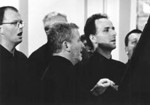 Recordings of the ensemble were thrice nominated for the prestigious award Fryderyk. Their record (together with the Camerata Vistula orchestra) of "Miserere" by Pawel Szymanski, dedicated to the ensemble, was recognised by Fryderyk ?97.
Recordings of the ensemble were thrice nominated for the prestigious award Fryderyk. Their record (together with the Camerata Vistula orchestra) of "Miserere" by Pawel Szymanski, dedicated to the ensemble, was recognised by Fryderyk ?97.
Bornus Consort's interest has gradually turning towards much earlier music. The group's first important undertaking concerning medieval music was performing the 13th-century liturgical drama "Ludus Danielis" (Warsaw Grand Theatre, 1984). This spectacle, being the beginning of medieval music research, was performed all over Europe. Nowadays the ensemble focuses mainly on monody, particularly the liturgical one. Reconstruction of medieval and renaissance vocal techniques, studies on modality, close collaboration with traditional folk singers, interest in different liturgical traditions and ways of performing them gave the ensemble's singers new perspectives of performing music in general. Equipped with this experience, they sometimes return to later music, however, bringing with them a completely new approach to the pieces.
Bornus Consort: Robert Lawaty, Robert Pozarski, Marcin Bornus-Szczycinski, Michal Siciarek, Miroslaw Borczynski, Stanislaw Szczycinski
Monodic and Polyphonic Chants - the Same Roots (Marcin Bornus-Szczycinski)
 Monodic and Polyphonic Chants - the Same Roots
Monodic and Polyphonic Chants - the Same Roots
When Marcel Peres - well known French singer and musicologist had begun his research on the 13th century Dominican tradition some 10 years ago, he was surprised by the initial outcome. The result which appeared was an unknown, strange, even shocking form of music which did not fit into any modern aesthetic concepts or musical habits, particularly those associated with the Gregorian chant.
What one could hear was a chant which was rhythmical, ornamental, strong, with many - also rhythmical - breaks. Such an extravagant music seemed to be a pure fantasy, completely contradictory to our contemporary aesthetic vision of music in general, and liturgical music in particular. Nevertheless we decided to follow this risky path. Personally, since 10 years ago, I have been collaborating closely with the Krakow Dominican friars on improving the musical quality of religious celebrations. The departure point of this work was a normal, generally accepted view on Gregorian chant, which was common within the whole Roman Catholic Church. Yet, from the inception of this work we had felt uneasy about certain specific features of the tradition which was still present and living among the Dominicans. These features and details did not fit the general idea and picture of the chant's form. "It's this Dominican taste," replied to me the interrogated Benedictines. The time was passing and new discoveries on the subject were coming forth. We developed contacts and collaboration with traditional singers, studied the 13th-century Dominican notation, their unusually precise treatises, and came to the conclusion that our fixed ideas and habits need a complete overhaul.
Nobody else in the Middle Ages had their own musical tradition described as carefully and precisely as the Dominicans. We have to remember that it was the time when oral tradition was predominant and notation yet its rare supplement. But the Dominicans decided, through the medium of writing, to unify the way of singing the liturgy throughout the whole, dynamically spreading Order. Around the year 1254 two, most probably identical, copies were made of a 1000-page book compiled on the subject. These books included the whole music of the Order. We find there all chants including the most basic pieces which normally nobody would note down (they were widely known and the parchment was expensive). Thus, the best-educated people of Europe were writing up, for their own equally educated colleagues,the simplest things concerning liturgy. The copy of Antiphoner Prototype which is kept at Santa Sabina in Rome has retained remnants of suspenders which allowed the heavy book to be carried on one's back. In this way, the book was taken from monastery to monastery so that it could be copied - without changing any notes or pauses - as we can read in the admonition given by the blessed Humbertus in his 20-page introduction.
It is the numerous pauses, introduced in the Dominican notation sometimes after every 2 or 3 notes, that serve as a key to understanding their way of singing. The theory of this singing was described in a very difficult, but very precise treatise De Musica, written by Hieronimus de Moravia in 1270. This treatise was so complicated that only a 100 years ago the reformers of the Gregorian chant still considered it to be a scholastic joke. Today we are trying to understand it anew, with the help of contemporary research on the subject as well as by making use of the experience of the cultures which have preserved their traditional ways of singing the sacred monody. Without the help of Greeks, Copts and Syrians we would not have been able to solve most of the rhythmic, notation and articulation puzzles. The modern European apparatus of musicology is insufficient here, because its similar practices are almost extinguished. Today, knowing the Dominican conservatism and their particular devotion to tradition, we can see more and more clearly that nothing new was created in the 13th century - the Dominicans, thanks to their intellectual rigour, simply described the existing chant in a more detailed and careful manner than the others. With every next month of living with their tradition of singing, we can sense that we are working on the fundamental elements of the whole tradition of liturgical chant - not only of the 13th century but of the entire first millennium, and not only of the European culture but its much older origins and patterns.
When one hears these Oriental scales, the ornaments of which survived only on the fringes of Europe (in Andalusia, Catalonia, Corsica and Greece), the rhythms so clearly Mediterranean, one realises why the liturgical chant of the epoch of St Dominic Guzman appears to be much more close to the vocal art of Andalusian flamenco than to the modern, theoretically constructed picture of the sacred chants' tradition.
Such a way of using the monody leads us directly to polyphony. For tonight's concert we have chosen a piece of one of our composers from the 1st half of XIV century - Nicolaus de Radom. He applied the construction of 3 parts fauxbourdon style, close to, for example, the works of Guillaume Dufay. It was the style "? la mode" of those years. We will try to conserve all attractions of the monodic way of singing, retaining the modal scales of each voice and the ornaments.
Marcin Bornus-Szczycinski
Artistic and Musical Director of Bornus Consort
St Dominic?s Mass
 Introit GIn medio Ecclesiaeg
Introit GIn medio Ecclesiaeg Kyrie
Gloria (Nicolaus de Radom)
Responsorium GOs justig
Alleluia GPie paterg
Credo (Nicolaus de Radom)
Offertor GDesideriumg
Sanctus
Agnus Dei
Communion: GFidelis servusg
Magnificat (Nicolaus de Radom)
Benedicamus (organum duplum from Stary Sacz - Poola)
